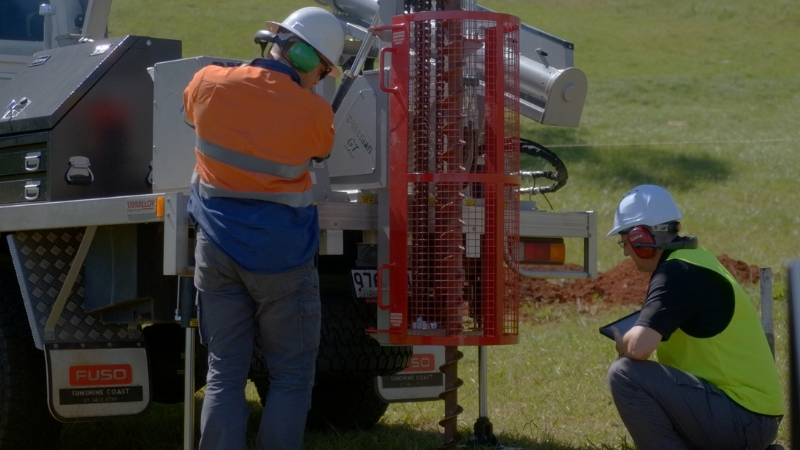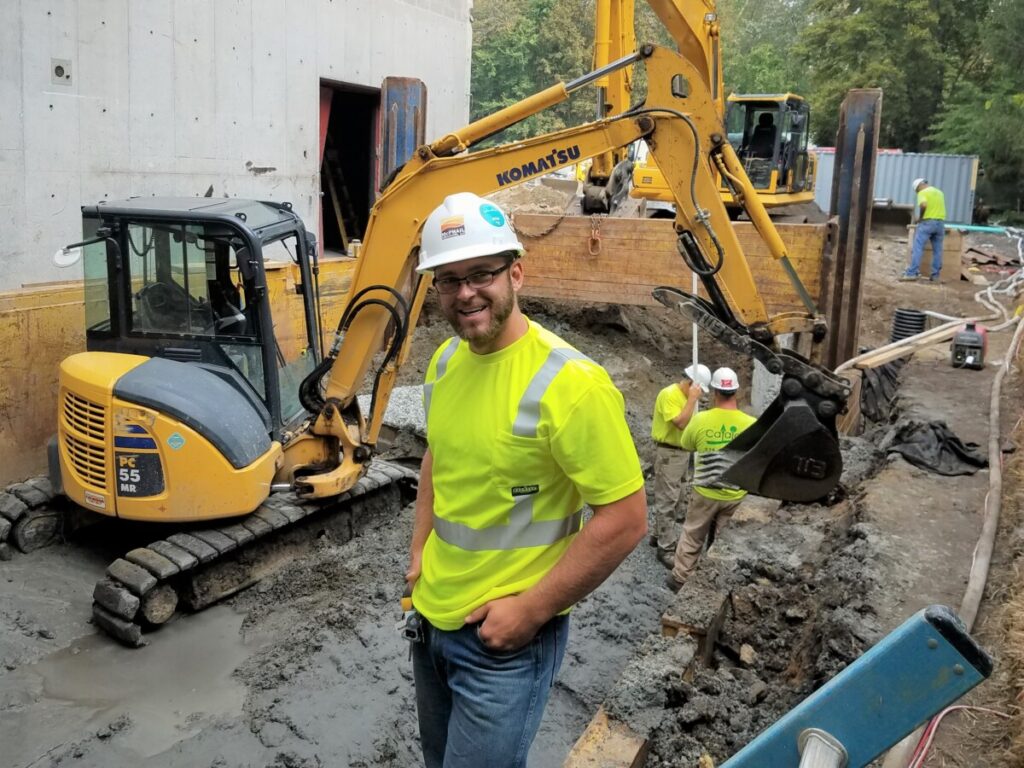Checking out the Advantages of Geo Tech Engineering for Urban Planning
Checking out the Advantages of Geo Tech Engineering for Urban Planning
Blog Article
Understanding the Comprehensive Function of Geotechnical Engineers in Ground Examination and Soil Analysis for Construction Jobs
Geotechnical designers are important to the success of building and construction tasks, giving crucial insights through extensive ground investigations and soil evaluation. Their proficiency in assessing soil actions and using innovative screening strategies notifies important decisions that support structural honesty and safety and security.
Duty of Geotechnical Engineers
The critical role of geotechnical designers in building and construction tasks can not be overemphasized, as they offer important insights right into soil actions and website conditions. These professionals are entrusted with examining the suitability of the ground for various sorts of structures, guaranteeing safety and security throughout the building and construction process. Their proficiency incorporates a wide variety of tasks, including website characterization, soil tasting, and lab testing, which are critical for figuring out the physical and mechanical homes of the dirt.
Geotechnical engineers use their findings to create foundational layouts that accommodate load-bearing needs and minimize risks related to soil slope, settlement, and liquefaction security. They play a crucial role in recognizing possible risks, such as groundwater changes and contamination, which can significantly influence job practicality. Furthermore, they collaborate with engineers, civil designers, and service providers to make certain that geotechnical considerations are incorporated right into the overall layout and building phases.
Ground Investigation Techniques
Ground investigation methods develop the foundation of geotechnical design, making it possible for engineers to gain an extensive understanding of subsurface problems. These methods are important for examining dirt residential or commercial properties, figuring out groundwater degrees, and recognizing possible geological threats.
Usual approaches consist of borehole boring, which enables for the removal of dirt samples at different depths, offering important data for evaluation. In addition, sitting screening strategies, such as Typical Infiltration Examinations (SPT) and Cone Penetration Tests (CPT), are employed to evaluate dirt strength and density directly in the ground.
Geophysical techniques also play a substantial function in ground investigations. Methods such as seismic studies and electric resistivity tomography aid analyze subsurface features without considerable excavation. geotechnical eng. These non-invasive approaches are especially advantageous in sensitive or huge areas where disturbance need to be minimized
Moreover, exploratory trenches can be dug deep into to visually evaluate dirt layers and identify any kind of anomalies. Each of these strategies contributes special insights, enabling geotechnical engineers to establish exact website evaluations and educate design choices. In recap, a combination of these ground examination techniques is important for effective construction jobs, making sure safety and security and structural integrity.
Soil Evaluation Approaches
Soil analysis approaches are crucial for understanding the chemical and physical residential properties of soil, which directly affect the layout and construction of foundations and various other frameworks. Various strategies are employed to evaluate soil features, ensuring that geotechnical engineers obtain precise information for educated decision-making.
One commonly used method is grain size analysis, which figures out the circulation of fragment dimensions within a soil sample. This is vital for classifying soil types and forecasting their behavior under load. Another important method is Atterberg limitations screening, which examines the plasticity and wetness material of fine-grained dirts, supplying understandings right into their design properties.

Field examinations, such as Basic Infiltration Tests (SPT) and Cone Penetration Examinations (CPT), offer useful in-situ information regarding dirt toughness and stratification. Collectively, these dirt evaluation methods develop the structure of geotechnical investigation, enabling designers to design reliable and safe structures customized to the specific conditions of the site.
Threat Mitigation Techniques
Applying effective risk reduction strategies is necessary for geotechnical designers to address prospective difficulties in building and construction tasks. These strategies are vital in determining, analyzing, and taking care of risks connected with dirt problems, website security, and groundwater fluctuations, which can adversely affect job results.
One main method entails performing thorough site investigations that use sophisticated geophysical methods and detailed soil sampling. By obtaining precise data on subsurface conditions, engineers can make informed choices on design and building and construction methods. In addition, using anticipating modeling devices permits for the simulation of numerous circumstances, making it possible for designers to visualize prospective issues and execute safety nets.
Furthermore, developing clear interaction channels among task stakeholders cultivates a collective method to run the risk of administration. Regular updates and consultations ensure that all events know the developing site problems and can adapt their strategies as necessary.

Influence On Building And Construction Tasks
The performance of threat reduction approaches straight affects the total success of building and construction tasks. Geotechnical designers play a pivotal role in this domain name, as their knowledge in ground investigation and soil analysis informs critical choices throughout the building and construction procedure. By precisely examining soil conditions and identifying potential threats, these experts make it possible for job teams to develop effective remedies that decrease threats connected with ground instability, water infiltration, and other geotechnical difficulties.
The impact of comprehensive geotechnical analysis appears in numerous elements of construction tasks, consisting of cost monitoring, task timelines, and structural integrity. Early identification of concerns permits for timely treatments, lessening costly hold-ups and budget plan overruns. Additionally, a comprehensive understanding of website conditions boosts the style and engineering procedure, guaranteeing that frameworks are built to hold up against ecological pressures and potential natural disasters.
Inevitably, the contributions of geotechnical designers are integral to the successful view website implementation of construction jobs. Their job not only cultivates safety and compliance with guidelines yet also improves the lasting sustainability of structures, making sure that they perform efficiently throughout their desired lifespan. The collaboration in between other stakeholders and geotechnical groups is essential for accomplishing optimum end results in construction ventures.
Final Thought
Finally, geotechnical designers perform an important feature in building and construction projects through detailed Going Here ground examinations and dirt evaluations. Their proficiency in evaluating soil habits, utilizing numerous examination strategies, and applying threat reduction strategies significantly contributes to the structural integrity and safety of built environments. By collaborating with multidisciplinary teams, these professionals boost task performance and make certain conformity with safety and security criteria, eventually causing successful building outcomes and reduced potential hazards.
Geotechnical designers are important to the success of building jobs, offering important understandings via detailed ground investigations and soil evaluation.The essential function of geotechnical designers in building and construction jobs can not be overstated, as they provide necessary understandings into dirt habits and site problems. Their know-how includes a wide array of tasks, consisting of website characterization, soil tasting, and lab testing, which are crucial for establishing the physical and mechanical homes of the soil.
By precisely evaluating dirt conditions and recognizing prospective risks, these professionals make it possible for project groups to develop reliable services that lower dangers linked with ground instability, water infiltration, and various other geotechnical challenges.
In final thought, geotechnical engineers do a crucial feature in building projects with thorough ground investigations and dirt evaluations.
Report this page